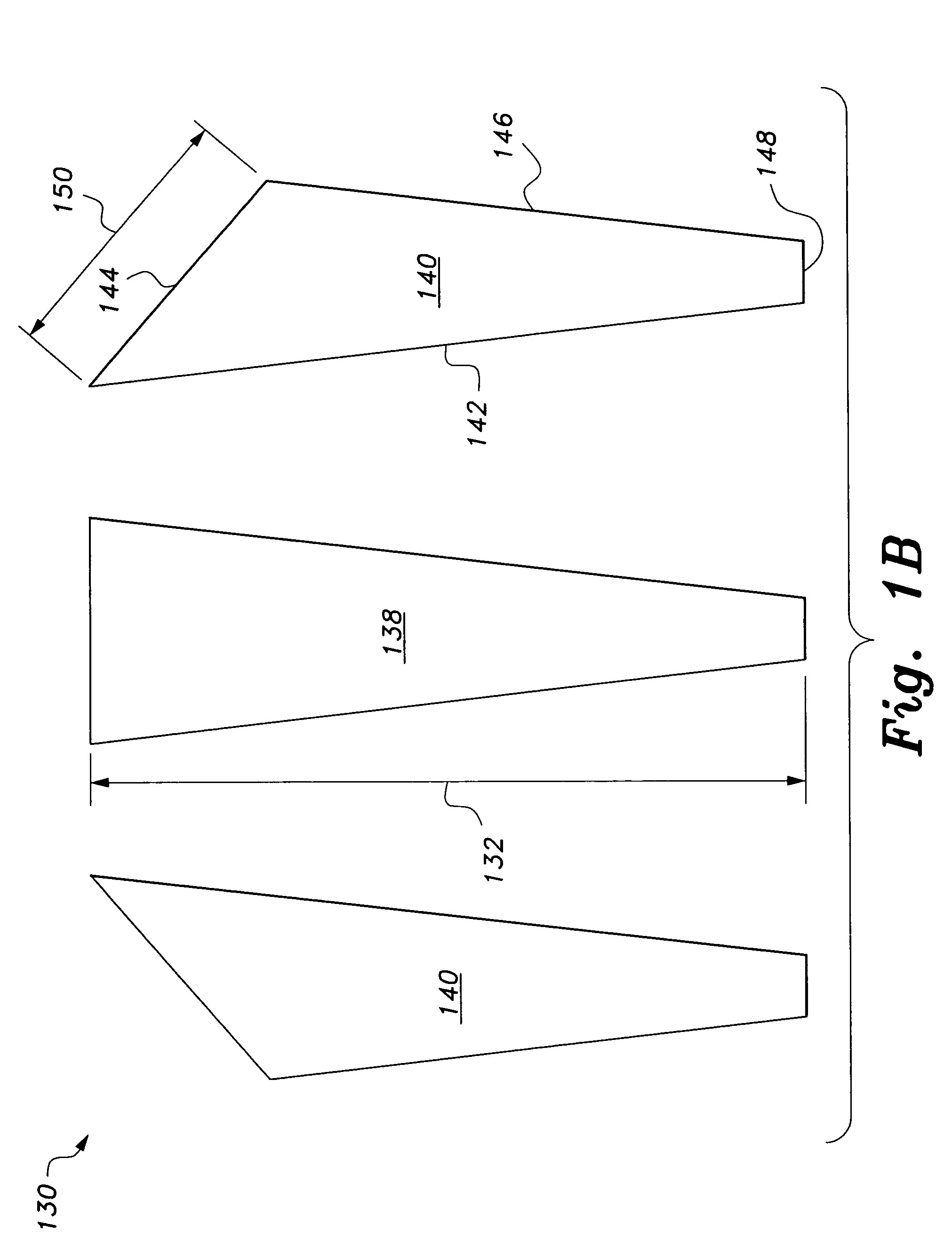Launch and recovery system
a technology of launching and recovery and compensation system, which is applied in the direction of passenger handling apparatus, special-purpose vessels, vessel construction, etc., can solve the problems of increased motion, increased difficulty in launching and recovery operations using the above method, and decreased ship stability during a diw launch or recovery attempt,
- Summary
- Abstract
- Description
- Claims
- Application Information
AI Technical Summary
Benefits of technology
Problems solved by technology
Method used
Image
Examples
Embodiment Construction
[0025]As shown in FIG. 1A, the present invention is a launch and recovery system, designated generally as 105 in the drawings. The system includes a dive wing and drogue assembly, including dive wing 125 and drogue 130, which may be deployed from the stern or other region of a ship 103 or boat by cables 110 (a dual cable system is shown in FIG. 1A, a single cable system being described below). A sling carriage 115 is slidably mounted on the cables 110. A boat 120, craft, or other payload to be launched is supported above, between, or below the cables 110 on the sling carriage 115. Cables 110 are played out from split or dual drum winches on the fantail until the dive wing 125 and drogue 130 reach the desired depth and angle to tension cables 110 and provide a safe angle of entry of the boat 120 into the water. A sling recovery line 111 is attached to the sling carriage 115, and is used to haul the sling carriage 115 back onboard after launch of the boat 120 using winch 102. The spli...
PUM
 Login to View More
Login to View More Abstract
Description
Claims
Application Information
 Login to View More
Login to View More - R&D
- Intellectual Property
- Life Sciences
- Materials
- Tech Scout
- Unparalleled Data Quality
- Higher Quality Content
- 60% Fewer Hallucinations
Browse by: Latest US Patents, China's latest patents, Technical Efficacy Thesaurus, Application Domain, Technology Topic, Popular Technical Reports.
© 2025 PatSnap. All rights reserved.Legal|Privacy policy|Modern Slavery Act Transparency Statement|Sitemap|About US| Contact US: help@patsnap.com



